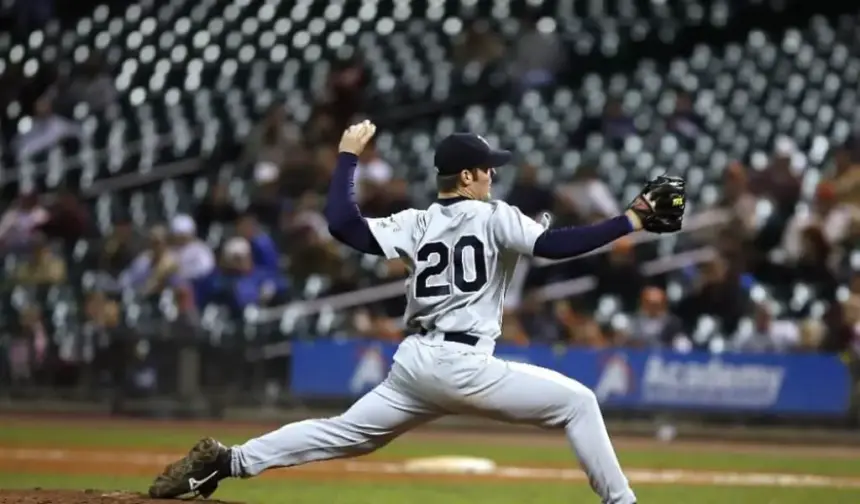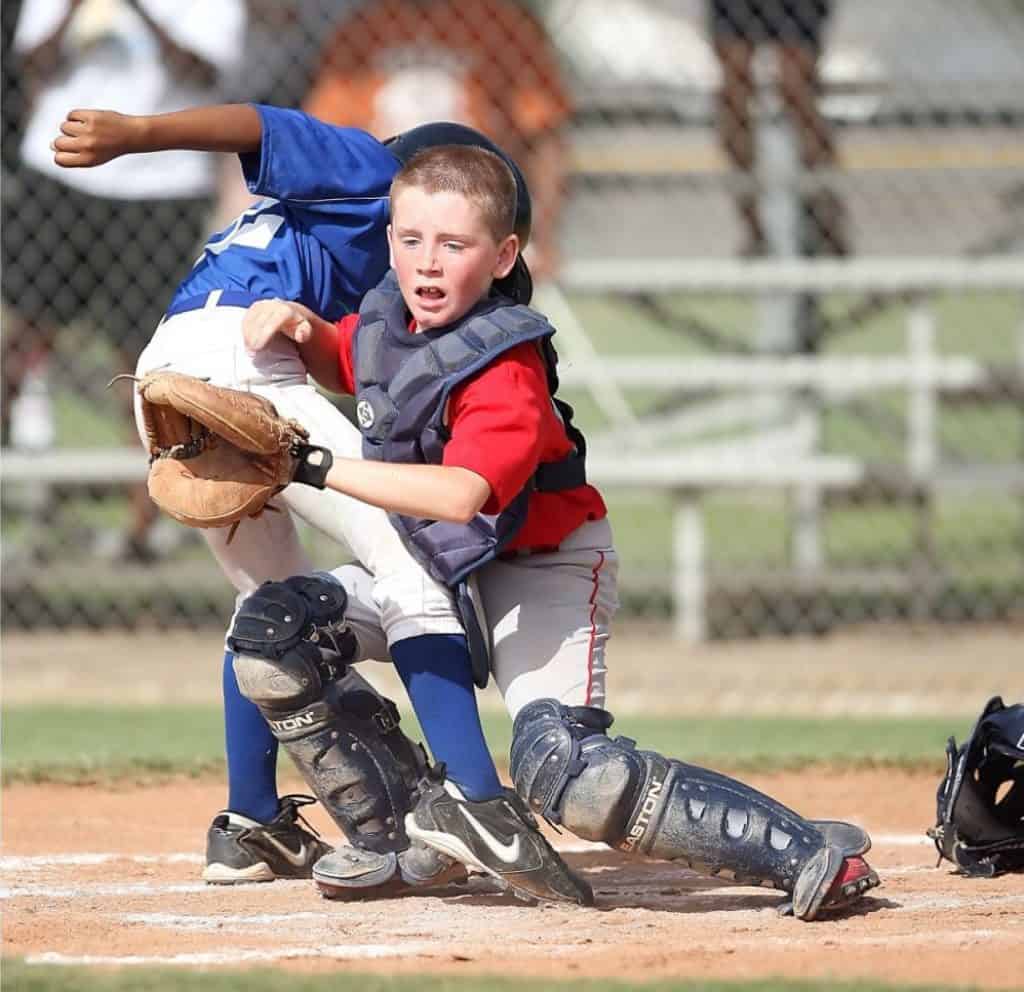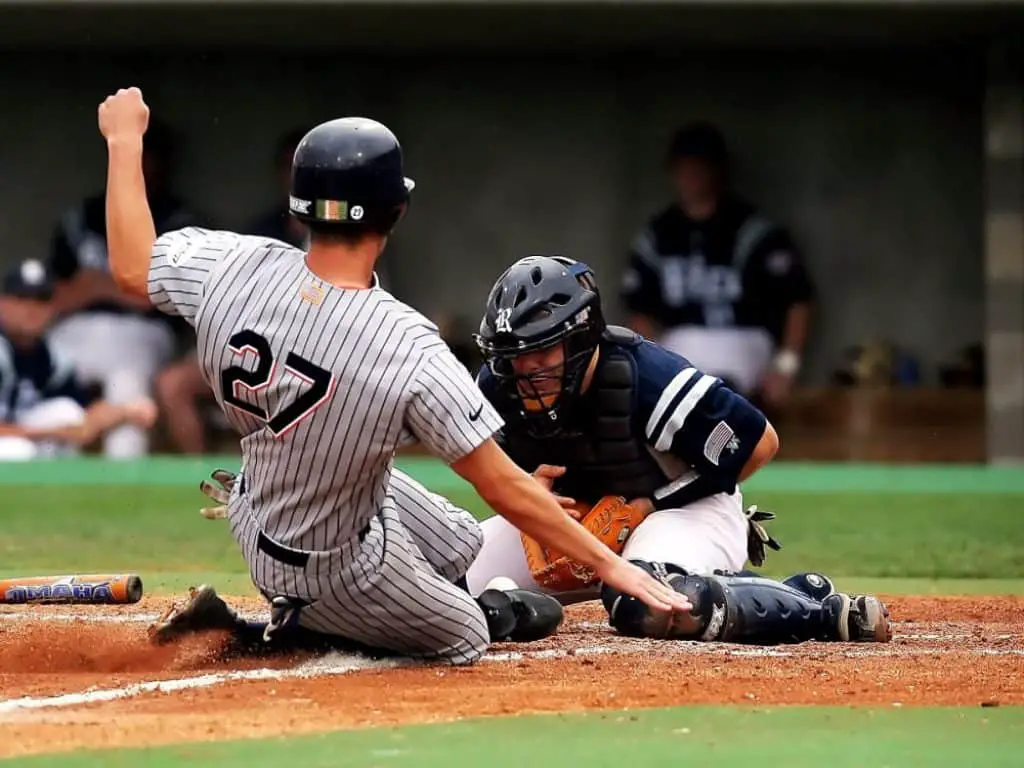Is Baseball Dangerous? (Answered In Detail!)
The last thing anyone wants when playing a sport is to get injured or come in harm’s way in any other form.
That’s why for many, especially parents choosing a sport for their kids, safety is the top priority.
As it is not a full-contact sport, like football or hockey, baseball is generally considered to be a rather safe game, both for kids and adults.
This plays a big part in the popularity of the sport, especially among children.
However, many studies paint a different picture of baseball, the one of a game that is not as safe as many people think.
To the outsiders, it may seem a bit slow with almost no contact between players.
However, those who played the sport or have watched many games have seen their share of collisions on the home plate, batters hit by pitches, and similar incidents.
So, is baseball dangerous?
Table of Contents
Is Baseball Dangerous?
The dangers of baseball are certainly not as widely publicized as those of football, boxing, or other contact sports.
Still, baseball carries some inherent risks, especially at higher levels.
According to some studies, it is among the top ten sports with the most visits to the emergency room.
In the modern game, we see pitchers throw at incredible speeds and balls coming off the bat at even greater velocity.
Plus, there’s always the risk of a bat flying out of the batter’s hands or breaking and accidentally hurting someone around.
On top of all this, there are collisions at the plate, ankle, and muscle injuries due to the student’s twists and turns, and enormous strain on shoulders and arms when pitching.
So, baseball is far from being completely safe.
Below, I’ll list the most common risk that players and spectators are exposed to on the baseball field.
Getting Hit by a Pitch

The modern pitcher’s development is mostly focused on them achieving the greatest possible velocity on their pitches.
So, we now have pro pitches routinely pitching at 100 mph. Even at a younger age, the speed of the pitch is no joke.
At the age of 12, many kids are already able to throw balls at 55-60 mph.
As they grow older and stronger, these speeds increase even further and high school, 70-80 mph pitches are fairly common.
So, obviously, hitters have an extremely short time to react to incoming pitches.
There’s usually about half of a second from the moment the ball leaves the pitcher’s hand until it reaches the home plate.
Therefore, batters often, especially on wild pitches, can’t get out of the way quickly enough and end up getting hit by the ball.
For this reason, they wear protective equipment, so they can prevent serious injuries.
Getting Hit by a Line Drive
The average exit velocity for the ball coming off the bat in the MLB is around 90 mph. This value can go even higher if one of the heavy hitters is at bat, often over 110 mph.
In youth leagues, the ball can also come off the bat at a tremendous speed, as young players mostly use aluminum bats which have a greater trampoline effect and, thus, higher exit velocity.
Therefore, it’s easy to see how the line drive can be dangerous to anyone in its trajectory. Line drives fly fast and straight, often leaving no time for players in the field to get out of their way.
The position most at risk is the pitcher, who stands right across from the batter at a distance of only around 60 feet.
Third basemen are also in danger, as most hard-hit line drives will go their way because the majority of batters are right-handed.
Collisions

As baseball is not a full-contact sport, players getting hit and injured by other players doesn’t happen that often.
However, collisions can happen and when they do, they can be dangerous. There’s no rule about where the collision can occur. It can be anywhere on the field.
A collision can happen in the outfield as two outfielders sprint toward the ball or around the bases.
Baseball collisions carry a lot of injury risk as they commonly happen when players are at a full sprint.
Plus, they’re mostly focused on the ball or some other aspect of the game and not the other player running toward them.
Because of this, collisions often end in serious injuries, such as concussions or broken noses and cheekbones.
To avoid a collision, players are taught from a young age to slide into the base, as it decreases the chances of head and neck injuries.
Getting Hit by the Tipped Foul Ball
Besides getting hit by pitches or line drives, baseball players are also at risk of getting injured by a tipped foul ball.
A foul ball that comes off the bat can go in various directions, but, commonly, players in the most danger of getting hit are the catchers.
These balls can easily go at speed of 100 mph, there’s a severe injury risk for catchers.
Exactly for this reason, catchers wear more pieces of protective equipment than any other player, including a face mask.
Still, even with a face mask on, a hit directly to the head can cause a concussion. Because of this, MLB now has a concussion protocol, similar to the one applied in the NFL.
Every player that experiences concussion symptoms after getting hit to the head, such as headache, confusion, dizziness, or memory loss, will be placed on the injury list for at least seven days.
Injuries While Sliding into Bases

I already explained that players, from a young age, are instructed to slide into bases.
Sliding implies dropping to the ground, as a player nears the base after a sprint, sliding on the stomach or backside using the friction with the ground to slow down.
Besides being a good way to avoid collisions and get to the base first, this also helps runners avoid getting tagged by defensive players.
However, sliding carries some other risks. Late slide at full speed or poor sliding technique can easily lead to ankle or knee injuries.
Head-first sliding can sometimes result in head or neck injuries. However, less serious injuries, such as a jammed wrist or broken fingers are much more common.
To protect themselves from this type of injury, runners sometimes wear hand protectors,
Continuous Stress on Joints
Baseball, due to the nature of the game, features a lot of repetitive movements. This is especially true for pitchers.
An average starting pitcher will probably throw more than 100 pitches over the course of the same game.
And each of these pitches involves the same or similar hand and arm motions.
Even though they don’t start every game and get several days of rest between starts, this still amounts to an incredible amount of pitches over the whole season.
All this puts a tremendous amount of strain on their joints, particularly shoulders and elbows. As a result, a lot of pitcher struggle with injuries, which often require surgeries.
Studies show that around 25% of pitchers, at some point in their career, had Tommy John surgery to repair the UCL ligament on the inside of the elbow.
This is also the most common surgical procedure among baseball players.
Is Baseball Dangerous for the Spectators?

During a baseball game, players on the field may not be the only ones at risk of getting injured.
Spectators at the stands can also be put in harm’s way, especially if they’re not careful and don’t keep an eye on the game.
Conversations with other fans or food can easily create distractions, which may prevent spectators to react on time.
The main danger for fans comes from foul balls and thrown bats.
The majority of balls that fly to the stands are harmless and commonly end up in the hands of some fan as a piece of memorabilia.
However, in rare cases when the ball flies out to the stands at a high speed, it can be dangerous and cause injuries.
Because of this, baseball fields commonly feature a protective net.
It’s usually set behind the home plate and down both baselines, as those fans are at the greatest risk.
Conclusion
Playing baseball carries with it a certain amount of risk which all players and parents of future players should be aware of.
The game involves hard balls flying at high speed, heavy wooden bats, and plenty of fast movements and sudden turns.
All of this can put players at risk of injury.
Additionally, as most players start their playing careers at a very young age, the strain on certain parts of the body gradually piles up over time.
However, even with all this, baseball is still among the safer team sports. It can be dangerous, but only to a certain degree.
Everything said above should in no way deter you from playing the game, but only serve as a reminder to be aware of the risk, be careful and mindful of other players, and always use protective equipment.




